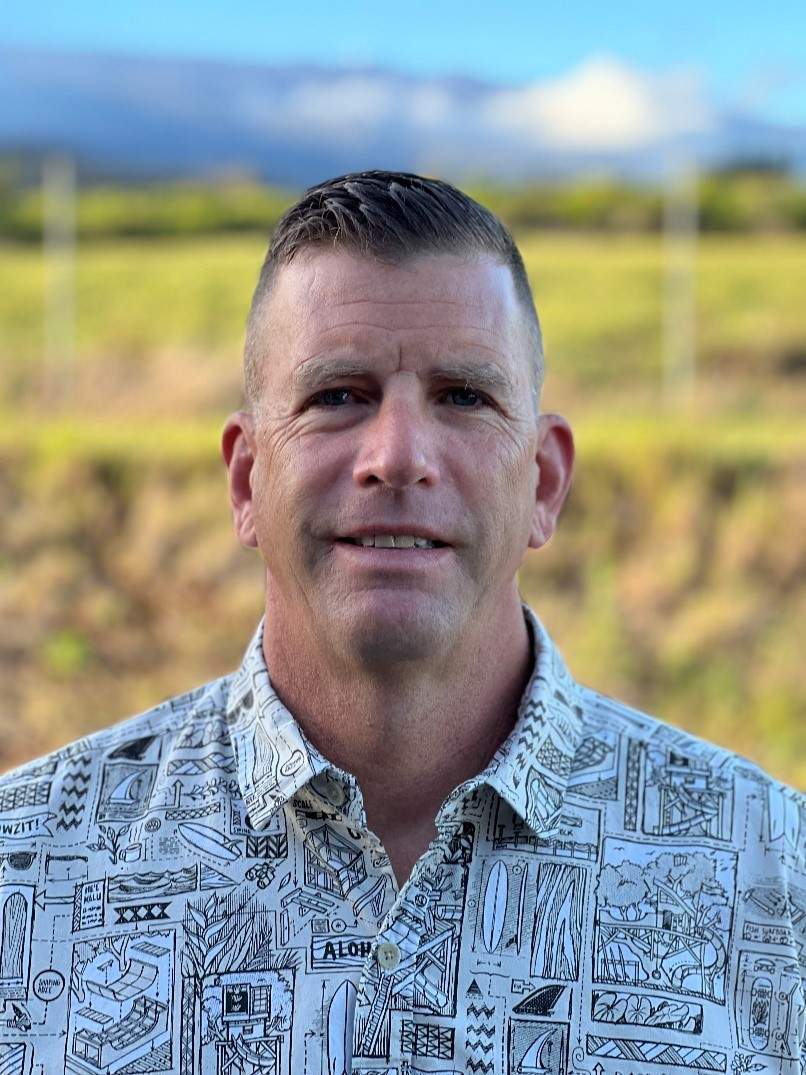
Maui-Based Employee Tapped For Recovery Effort
Maui-Based Employee Tapped For Recovery Effort

Greg Jenkins joined Matson in June of 2022 as a Dangerous Goods Specialist after a 33-year career as a firefighter on Maui. Approximately one year later, after wildfires destroyed the historic town of Lahaina as well as homes in other parts of Maui on August 8, his phone was ringing nonstop.
One of the calls was from the Maui County Emergency Operations Center. Relief supplies were beginning to flow into Maui and donations from across the Maui community began to inundate the Napili Fire Station. Local officials needed to quickly assess community needs and set up relief supply distribution centers around Lahaina. Jenkins and fellow Maui Fire retirees were asked to lead one of the County’s community relief supply efforts located at Napili Plaza, and the next three weeks turned into a blur of sleepless nights and exhausting days organizing and standing up community distribution centers across West Maui.
“The only site that was workable at the time was the dense evacuee area of Napili, so we coordinated with the property manager and Fire Captain on duty at the Napili Station and set up in front of Napili Market,” said Jenkins. “After that, we were serving several hundred-plus people per day for several weeks with ice out of Matson refrigerated containers, meals, dry goods, human and pet medical, and more.”
Having specialized in Hazardous Materials (otherwise known as “HazMat”) during his firefighting career, Jenkins had retired as Captain of Maui Fire’s HazMat Response Unit. As the response agencies began to plan the first phase of recovery – restoring safety in the community by clearing household hazardous waste – a new assignment came to work on rendering lithium-ion batteries safe for transportation to the mainland for proper recycling disposal.
Now he was being asked to participate in planning meetings and help develop strategies to accomplish a host of difficult tasks as quickly and safely as possible. He requested leave from Matson and has since devoted himself full-time to helping manage parts of the incident response and recovery effort, while still helping cover some of the key responsibilities of his position with our Safety, Quality, Environmental, and Security department.
Phase 1 of the site recovery effort began in late August under the direction of the U.S. Environmental Protection Agency (EPA) with the removal of household hazardous waste materials, such as commercial waste, lithium-ion batteries in residential and commercial properties, and electric vehicles along with gas cylinders, paints, solvents, pesticides, fertilizers and battery packs used in solar power. These materials can be shipped on commercial carriers like Matson if they qualify for carriage under strict Dangerous Goods regulations, and, in Matson’s case, the company’s own strict requirements and acceptance procedures.
Jenkins’ focus on lithium-ion batteries has put him near the leading edge of science addressing one of the more pressing concerns in the maritime industry. Along with being ubiquitous in consumer goods from cell phones to hearing aids, lithium-ion batteries are the heart of a global shift toward electric vehicles along with residential and commercial energy storage. In recent years, the world has learned that if a lithium-ion battery catches fire, conventional firefighting techniques are almost ineffective.
(Last year, Matson acquired newly developed equipment designed to control a lithium-ion battery fire in a container – see the story in our December 2022 issue – and implemented a new, comprehensive screening process to ensure the safe carriage of electric vehicles and other products with lithium-ion batteries. The company is also in the process of acquiring state-of-the-art early detection fire warning systems for our CON-RO vessels.)
Jenkins and our Dangerous Goods team, along with Environmental Affairs Manager Keahi Birch, have been working closely with EPA leaders assigned to the Maui response effort and other stakeholders to ensure that anything shipped from Maui is safe to transport.
